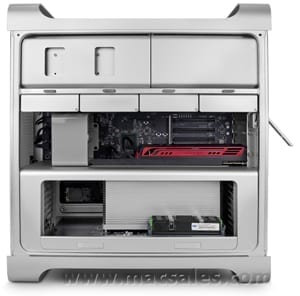

Since then, the rise of browser-based enterprise apps - especially those less likely to rely on Windows-only ActiveX technology - has continued to make platform choice less of an issue for IT.
#2010 MAC COMPUTER MAC OS#
Moreover, Apple's switch to the Intel chip in 2006 allowed Windows to run on Macs, and the groundbreaking Parallels Desktop made it possible and easy to run Windows and Mac OS at the same time, thereby removing IT's lingering software compatibility concerns.

#2010 MAC COMPUTER MAC OS X#
The elimination of proprietary ports in favor of USB, Wi-Fi, DVI, and FireWire the adoption of IDE hard drives and PCI graphics cards the elimination of AppleTalk the inclusion of ActiveDirectory support in Mac OS X - all have made the Mac enterprise-network-ready for years. The case for the Mac's ascension in 2010 For years, Apple has doggedly removed the barriers to business adoption of the Mac, while not compromising the UI, design, and media-oriented strengths that have always appealed to the Mac faithful. How Apple fares in this area is likely the key to whether the Mac can evolve beyond a beloved but marginal player and instead become a serious option in business. Yet one survey shows that 80% of enterprises support the Mac, making it a widely adopted niche product. After all, Apple has done nothing to bolster the support infrastructure for the Mac, and its bungling of ActiveSync support in the iPhone - where businesses get serious demand from users for adoption - further calls into question the company's business-use commitment Perhaps that ambivalence is why some market data suggest Apple's sales have peaked.
#2010 MAC COMPUTER PC#
Yet despite new PC sales share estimates between 6 and 12%, the Mac's total installed base hovers around 4% - a fact that could, as AppleInsider wisely argues, be cause for optimism, indicating plenty of headroom for growth, or pessimism, suggesting the Mac has too small a base to gain much traction, especially in businesses where exceptions are frowned on. In fact, with the exception of one fiscal quarter, Apple's Mac sales have grown faster than PC sales for five consecutive years.Īnd I was pleased by the release of Mac OS X 10.6 Snow Leopard this past summer, with its built-in support for Microsoft Exchange servers and VPNs - two features clearly aimed at satisfying IT's needs. So I was happy to see that sales of Apple's pricey MacBooks grew in 2009 despite the recession. But even in the dark times, I embraced the Mac's more human design quality, and when Apple resurrected itself in the 2000s, I cheered it on. For most of the decade, I was an XP user, and in the 1990s I was bi-platform, a Macworld editor whose history had been on the PC side and who had issues with Apple's extreme arrogance (a flaw that endures undiminished today), as well as the mediocre quality of its 1990s-era Macs.

I use a Mac as my preferred PC, but only after I first tried Windows Vista.
/https://public-media.si-cdn.com/filer/c5/82/c5820ed7-0a81-4b80-9b0b-f1b162b36fde/mac_1a.jpg)
Let me be clear: I've long had a love/hate relationship with Apple and the Mac.


 0 kommentar(er)
0 kommentar(er)
